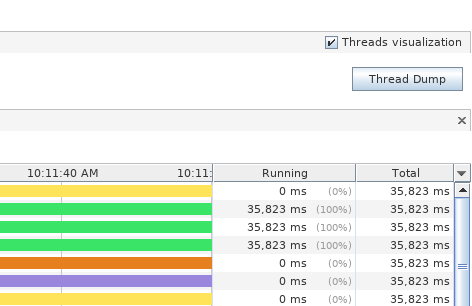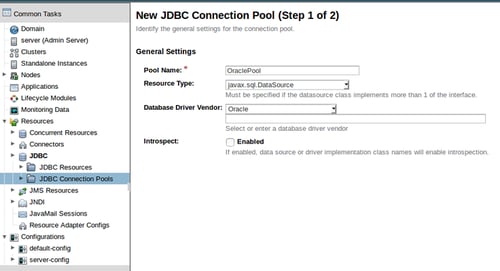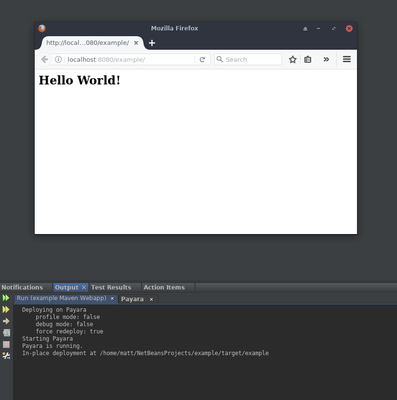Securing a Payara Server Cluster using NGINX
Published on 10 Aug 2017
by Matthew Gill
Topics:
NGINX,
Hazelcast,
Clustering,
How-to,
Scalability
|
3 Comments
In order to make a cluster of servers appear as one server, you need to introduce a load balancer. A load balancer will accept a request, and redirect it to one of the members of the cluster depending on a given configuration. A web server such as NGINX or Apache can act as this load balancer as well as a reverse proxy, which allows the web server to load balance requests across the cluster, act as a termination point for SSL connections to reduce strain on the cluster, as well as cache server content for quicker access. In this blog, we will set up NGINX as a reverse proxy and secure it using SSL.
Payara Micro JCA Adapters - Amazon SQS
Published on 26 Jul 2017
by Matthew Gill
Topics:
What's New,
Payara Micro,
Microservices,
Cloud,
Amazon Cloud,
Cloud Connectors
|
3 Comments
In this blog, which follows on from the Cloud Connectors in Payara Micro, we will explain the Amazon Simple Queue Service (SQS) connector and how to use it in Payara Server / Micro.
Payara Micro JCA Adapters - MQTT
Published on 28 Jun 2017
by Matthew Gill
Topics:
What's New,
Payara Micro,
Microservices,
Cloud,
Cloud Connectors
|
14 Comments
In this blog, which follows on from the introduction to Cloud Connectors in Payara Micro, we will explain MQTT and how to use it in Payara Micro with Mosquitto.
Payara Micro JCA Adapters - Apache Kafka
Published on 08 Jun 2017
by Matthew Gill
Topics:
What's New,
Maven,
Payara Micro,
Microservices,
Cloud,
Uber JAR,
Cloud Connectors
|
11 Comments
In this blog, which follows on from the introduction to Cloud Connectors in Payara Micro, we'll guide you through the process of setting up Payara Micro as a Kafka Client, which can produce and consume data from Apache Kafka.
Cloud Connectors in Payara Micro
Published on 02 Jun 2017
by Matthew Gill
Topics:
What's New,
JMS,
Java EE,
Cloud,
JCA,
Cloud Connectors
|
0 Comments
Payara Micro 172 brings with it support for JCA adapters, meaning it can be used as a client for Java Messaging Service (JMS) brokers. JMS is a Java EE API which provides a common interface for standard communication protocols. This means that you can send and receive messages between systems in a platform and language independent way. With Payara Micro now supporting JMS, you can setup your Micro instance as a JMS client with Message Driven Beans (MDBs) to listen and respond to messages from other systems through a message broker.
Identifying Deadlocks in Thread Dumps from Payara Server
Published on 11 May 2017
by Matthew Gill
Topics:
How-to,
Admin,
JVM,
Oracle JDK
|
0 Comments
The previous part of this blog showed how to take a thread dump of Payara Server. This part will go through reading these thread dumps, particularly in regard to identifying deadlocks.
Taking a Thread Dump of Payara Server
Published on 08 May 2017
by Matthew Gill
Topics:
How-to,
Admin,
JVM,
Oracle JDK
|
1 Comment
Thread dumps are a useful tool for debugging an application that's running slowly, or is otherwise causing problems. A thread dump is a snapshot of what each running thread is doing at a particular moment. It allows you to see if a thread is running, waiting, or stalling. This two-part guide will show you how to take a thread dump of Payara Server, and how to get useful information from it.
Payara for Beginners: Integrating Payara Server with Oracle 11g XE
Published on 13 Apr 2017
by Matthew Gill
Topics:
Payara Server Basics,
How-to,
Ubuntu
|
0 Comments
Most modern-day web applications need some way to store data in a database. Oracle arguably gives you the best RDBMS solution when it comes to security, support, and scalability. Oracle XE is the version that is most suitable for developers for small or personal projects, and should also be compatible with the full version of Oracle database. This guide will walk through the configuration of Oracle XE, and how to configure Payara Server to use it.
Payara for Beginners - Adding Payara Server to NetBeans
Published on 28 Feb 2017
by Matthew Gill
Topics:
Maven,
Payara Server Basics,
How-to,
NetBeans
|
32 Comments
This blog uses NetBeans 11.1. If you're using an older version, you may need to perform slightly different steps to get the same result.
When testing an app to be run on Payara Server, it can be extremely useful to be able to test your app continuously from your IDE. If you're using NetBeans this is made very easy. Follow the steps in this blog to setup NetBeans to use Payara Server for running your web apps.








